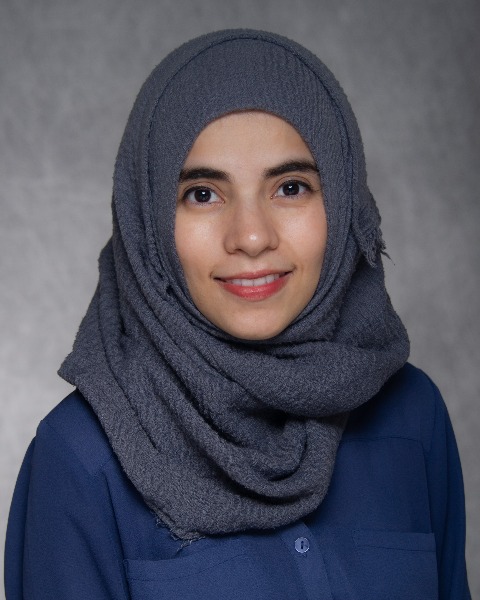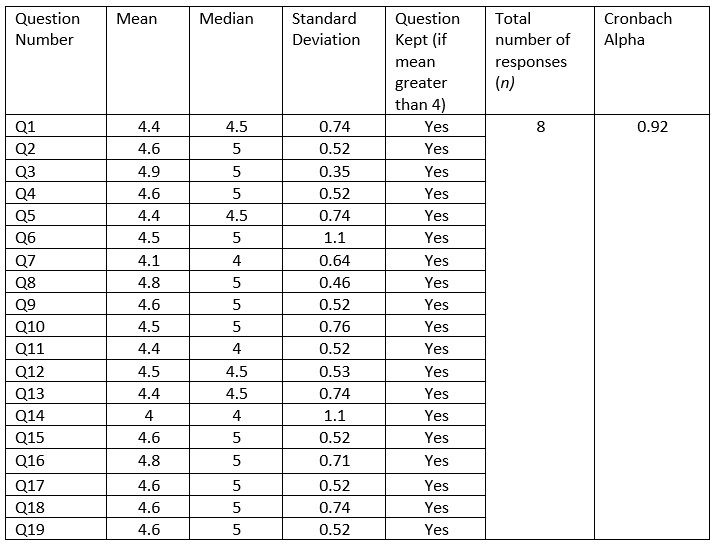Neonatal General
Neonatal General 8: NICU Practices 2
185 - The Development and Initial Validation of a Neonatal Ultrasound Guided Pericardiocentesis Procedural Checklist
Sunday, April 30, 2023
3:30 PM - 6:00 PM ET
Poster Number: 185
Publication Number: 185.332
Publication Number: 185.332
Timothy G. Elgin, American Family Children's Hospital, Madison, WV, United States; Numra Aleem, University of Iowa Stead Family Children's Hospital, Coralville, IA, United States; Brady Thomas, University of Iowa Stead Family Children's Hospital, Iowa City, IA, United States; Adam S. Bauer, University of Wisconsin School of Medicine and Public Health, MADISON, WI, United States; Luke Lamers, American Family Children's Hospital, Madison, WI, United States

Numra Aleem, MBBS (she/her/hers)
Neonatology Fellow
University of Iowa Stead Family Children's Hospital
Coralville, Iowa, United States
Presenting Author(s)
Background: Procedural checklists are a cognitive aid which have contributed towards improving outcomes in medicine by streamlining the appropriate steps, especially in high acuity situations. Cardiac tamponade is a once such situation encountered in the neonatal intensive care unit where ultrasound guidance could prove beneficial. Neonatal point-of-care ultrasound guided pericardiocentesis is not a well described procedure in the literature. Emergence of recent recommendations necessitates not only describing the appropriate technique but translating that into a standardized checklist that is easily adaptable.
Objective: Initial validation of a novel neonatal ultrasound-guided pericardiocentesis checklist (USGPC).
Design/Methods: Checklist development was guided by the team’s clinical experience, available literature, evidence-based checklist design publications, and the INSPIRE network procedural checklist guidelines. The checklist was further reviewed by an expert panel in an iterative Delphi process. The panel was comprised of 11 individuals from 3 institutions representing 4 subspecialties with expertise in either pericardiocentesis, ultrasound, and/or neonatal high-risk procedures. Checklist steps with a mean of 4 or above on the 5-point Likert scale were kept. Mean, median, and standard deviation were calculated for each step in the checklist. Cronbach’s alpha was calculated to measure internal consistency.
Results: The checklist involved 19 distinct steps. Of the 11 expert reviewers, 8 completed the survey in full. There was a universal agreement among the experts in the importance of each step. All 19 steps had a mean score of greater than 4. Due to the universal initial agreement no additional second Delphi round was required and all steps were kept in the checklist. Internal consistency was strong with a Cronbach alpha of 0.92.
Conclusion(s): Ultrasound guidance is a rapidly emerging topic within neonatology and represents a potential avenue to re-examine the way we currently approach many neonatal procedures. The panel of subspecialty experts were in universal agreement with the steps included in USGPC, all items were rated with a mean score of 4 or above, and the list exhibited strong internal consistency. Currently, inter-rater reliability testing is underway. The initial development and validation of the USGPC suggest it may have a central role in simulation-based procedural education and clinical improvement. As more providers incorporate point-of-care ultrasound in practice, this checklist has the potential to serve as a protocol guide and a metric that can demonstrate improvement for the trainees.
.jpg)

